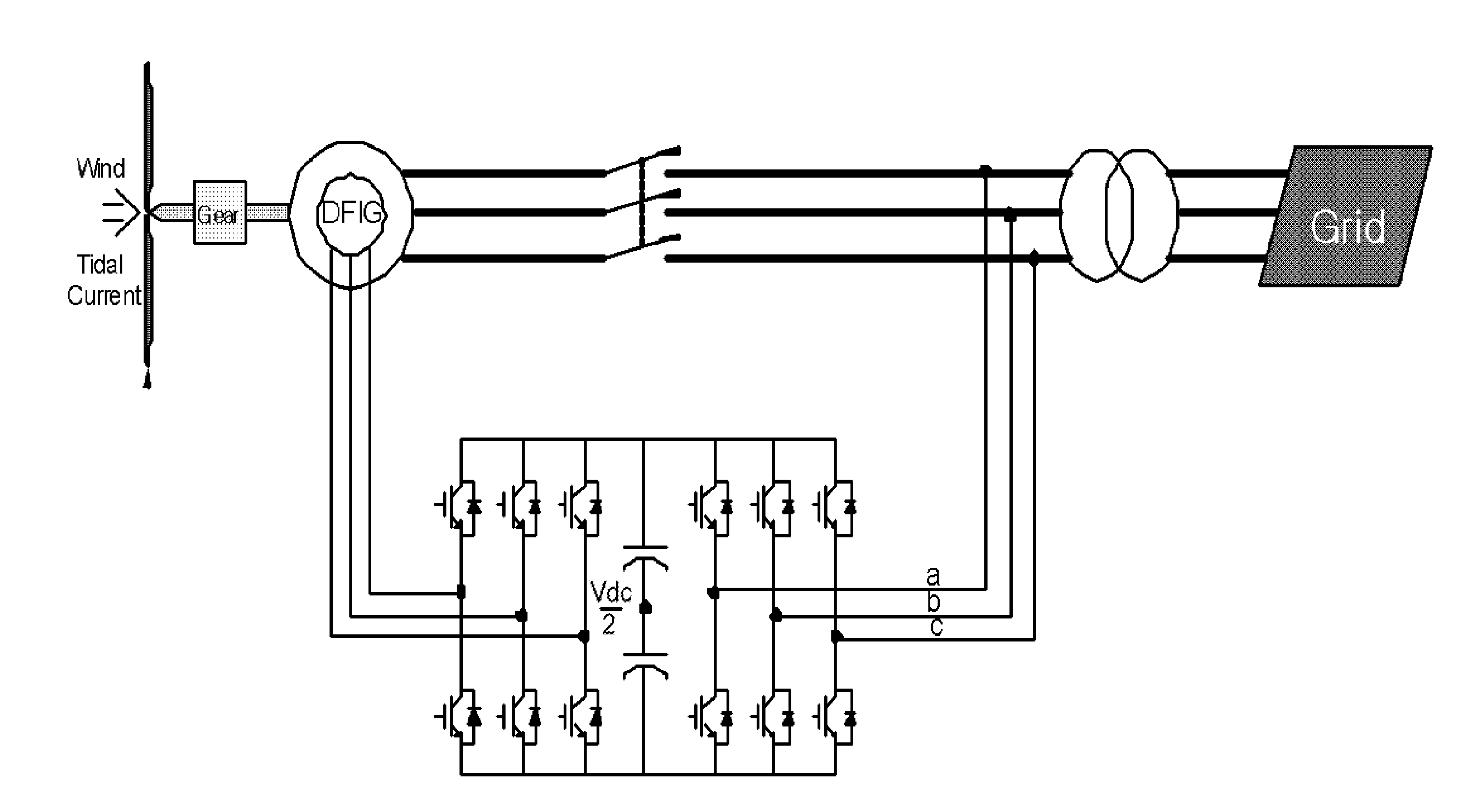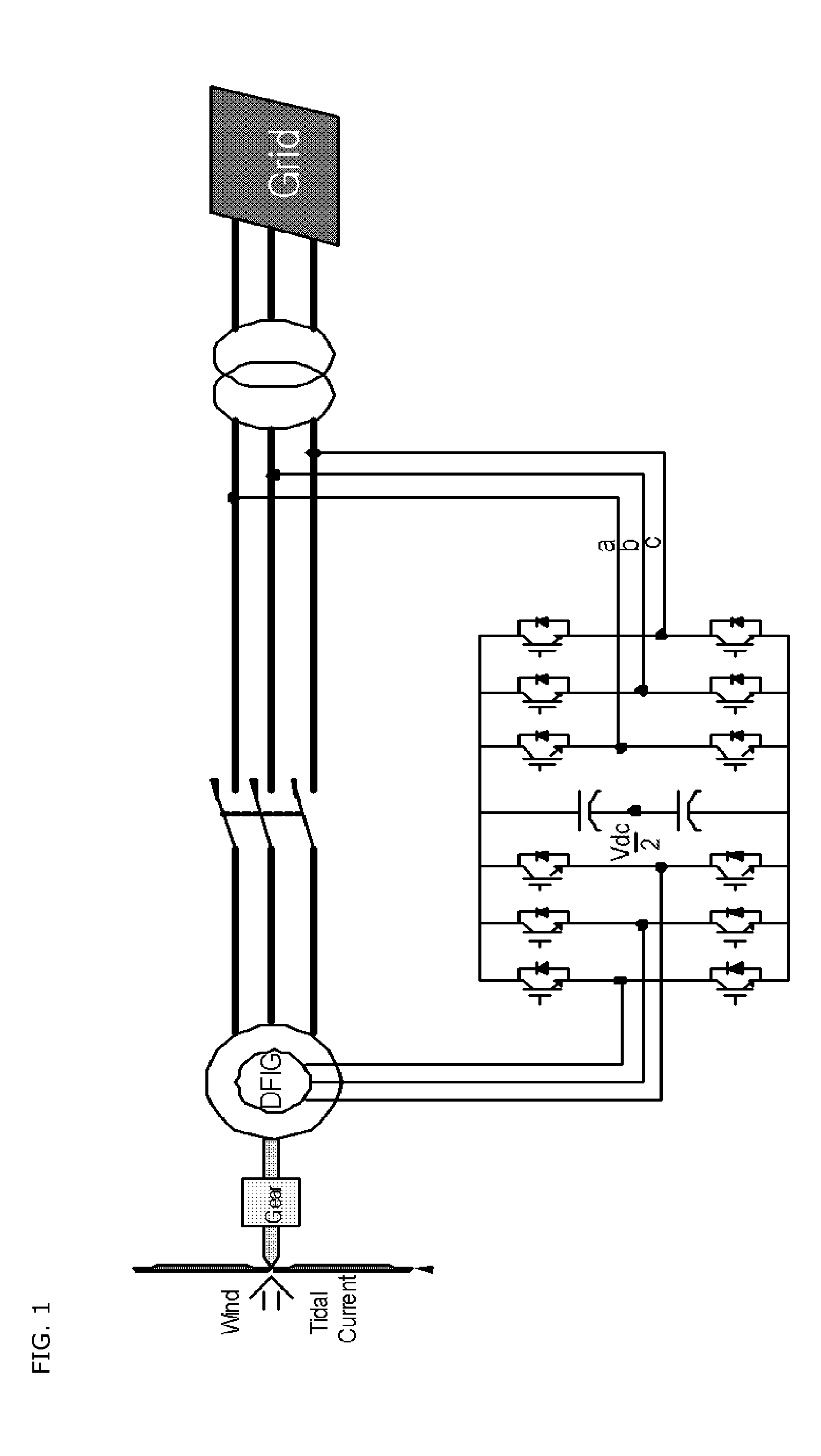Control Device for Doubly-Fed Induction Generator in Which Feedback Linearization Method is Embedded
a control device and linearization method technology, applied in the control of electric generators, dynamo-electric converters, dynamo-electric machines, etc., can solve the problems of unbalanced voltage, unbalanced voltage, and control characteristics that are deteriorated under unbalanced voltage, so as to achieve stable control and extend the market
- Summary
- Abstract
- Description
- Claims
- Application Information
AI Technical Summary
Benefits of technology
Problems solved by technology
Method used
Image
Examples
Embodiment Construction
[0057]Hereinafter, preferred embodiments of the present invention are described in detail with reference to the accompanying drawings in order for those skilled in the art to easily understand.
[0058]A control device for a doubly-fed induction generator according to the present invention divides positive sequency components and negative sequency components from stator-side voltage and current, rotor-side voltage and current, and signals of stator magnetic flux and rotor magnetic flux of the doubly-fed induction generator (DFIG), converts the components in a d-q coordinate system, and controls the d-axial and the q-axial current components of the positive sequency components and controls the d-axial and the q-axial current components of the negative sequency component by using four signals for the rotor current which is divided into a d-axial positive sequency component, a q-axial positive sequency component, a d-axial negative sequency component, and a q-axial negative sequency compo...
PUM
 Login to View More
Login to View More Abstract
Description
Claims
Application Information
 Login to View More
Login to View More - R&D
- Intellectual Property
- Life Sciences
- Materials
- Tech Scout
- Unparalleled Data Quality
- Higher Quality Content
- 60% Fewer Hallucinations
Browse by: Latest US Patents, China's latest patents, Technical Efficacy Thesaurus, Application Domain, Technology Topic, Popular Technical Reports.
© 2025 PatSnap. All rights reserved.Legal|Privacy policy|Modern Slavery Act Transparency Statement|Sitemap|About US| Contact US: help@patsnap.com



